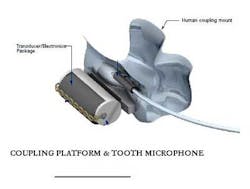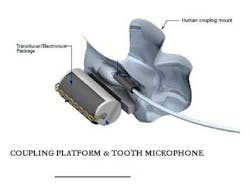Research involving novel tooth microphone has potential to propel the field of dental sleep medicine forward
No doubt about it — sleep dentistry is growing, and it’s going to do nothing but get bigger. Sleep apnea is big. Snoring is big. Sleep disordered breathing is big. And somebody needs to do something about it. Enter the dentist and the dental team.
RELATED |You can do it! Oral sleep apnea therapy coded correctly
The 22nd Annual Meeting of the American Academy of Dental Sleep Medicine held recently in Baltimore highlighted clinical research from various areas, one of which is a novel “tooth microphone,” which is used to record nighttime respiratory sounds. Currently, there are no electronic systems attachable to oral appliances that can monitor daily patient usage and effectiveness. This research funded by a National Institute of Deafness and Communication Disorders (NIDCD) grant developed and tested a highly sensitive intraoral audio sensor, which when combined with pattern-recognition software and attached to an oral appliance, functioned as the “front-end” of a system that could monitor sleep apnea treatment through audio recording of nighttime breathing sounds. The researchers concluded that such a tooth microphone system has therapeutic, diagnostic, and commercial potential to help monitor compliance with oral appliance therapy (OAT). OAT is a treatment for obstructive sleep apnea (OSA) that uses a device custom-fit by a dentist to maintain an open, unobstructed airway.
RELATED |Screening for sleep disorders in the dental office: Better sleep for better health
You can read the abstract here:ABSTRACT: Recording breath sounds with a novel tooth microphoneDo you approach the subject of snoring with your patients? Snoring and sleep disorders are big problems. They aren't going away, and dental professionals are in an excellent position to be part of the solution. Stay tuned, because the field of dental sleep medicine is making big leaps forward, and dental practices across the country will be a part of the progress.

